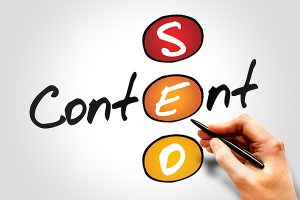Common gaps in content
 Modern SEO is as much about optimizing the experience for the end-user than it is about optimizing the content. We should see the search query as the beginning of a journey, that takes the customer from research to purchase with as little friction as possible. Unfortunately, we can only see the query that led the customer to our landing page. We can use the search query and the page itself to identify the intent of the customer and help them along that journey. However, in doing so, we need to ensure that there are no gaps in the process. Here are the three most common gaps:
Modern SEO is as much about optimizing the experience for the end-user than it is about optimizing the content. We should see the search query as the beginning of a journey, that takes the customer from research to purchase with as little friction as possible. Unfortunately, we can only see the query that led the customer to our landing page. We can use the search query and the page itself to identify the intent of the customer and help them along that journey. However, in doing so, we need to ensure that there are no gaps in the process. Here are the three most common gaps:
Path
There is nothing worse than arriving at a website, seeing a product, and not knowing how to proceed. That is an example of a broken path. The problem is usually something related to navigation. Even when the landing page is out of sequence, there should be some form of navigation that takes the customer back on the journey.
Question
Another common issue is when the customer has a question, arrives at a page, and finds nothing of relevance. Regardless of the question, the page should always answer the question, especially if the title promises some form of resolution. The customer will hit the back button and start searching again.
Stock
A common issue on retail websites are when items are out of stock but still appear in the search results. That kind of stock gap affects the outlook of the entire store, not just the product. Have you searched for an item, seen it listed, only to find that it is out of stock only on the product detail page?


